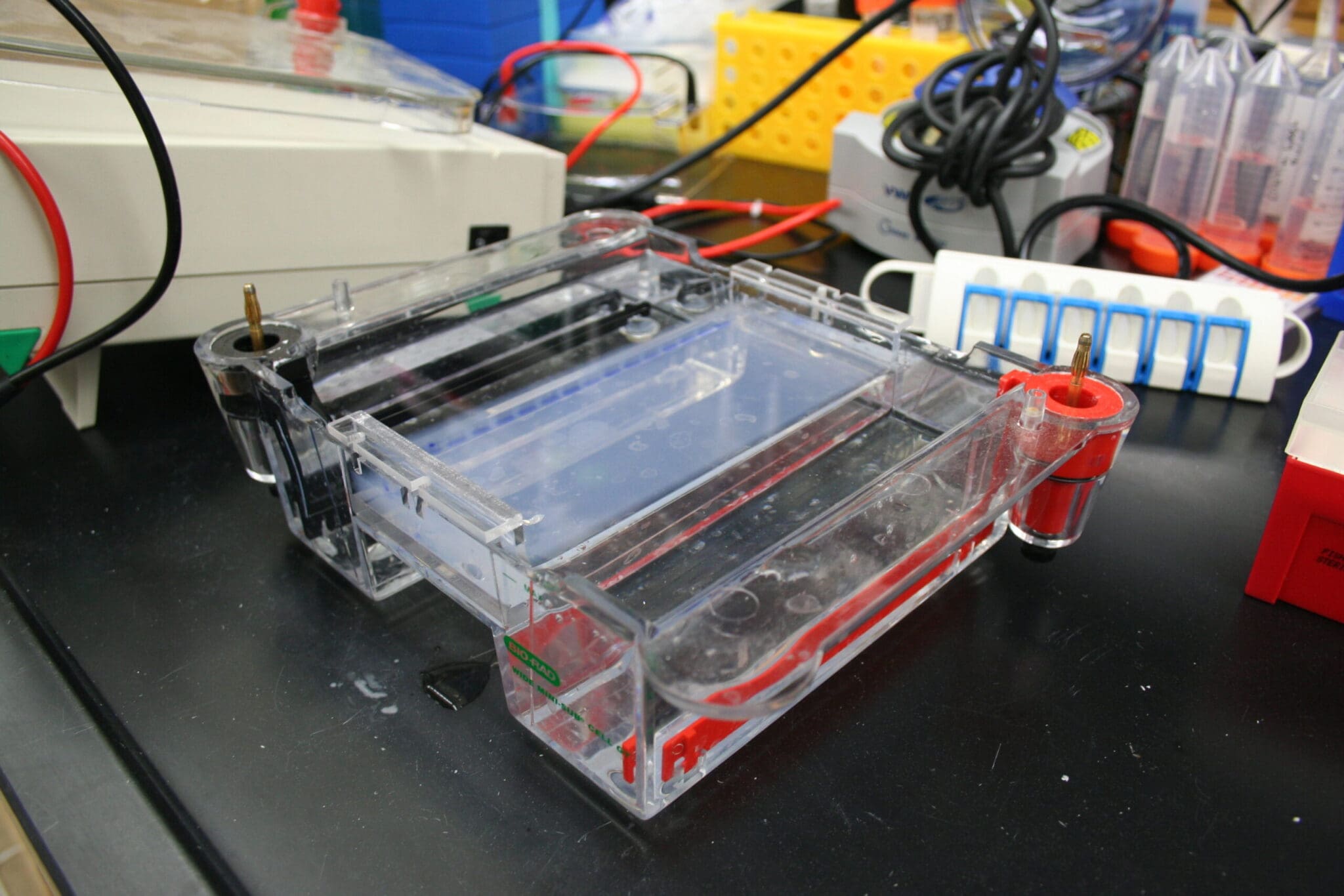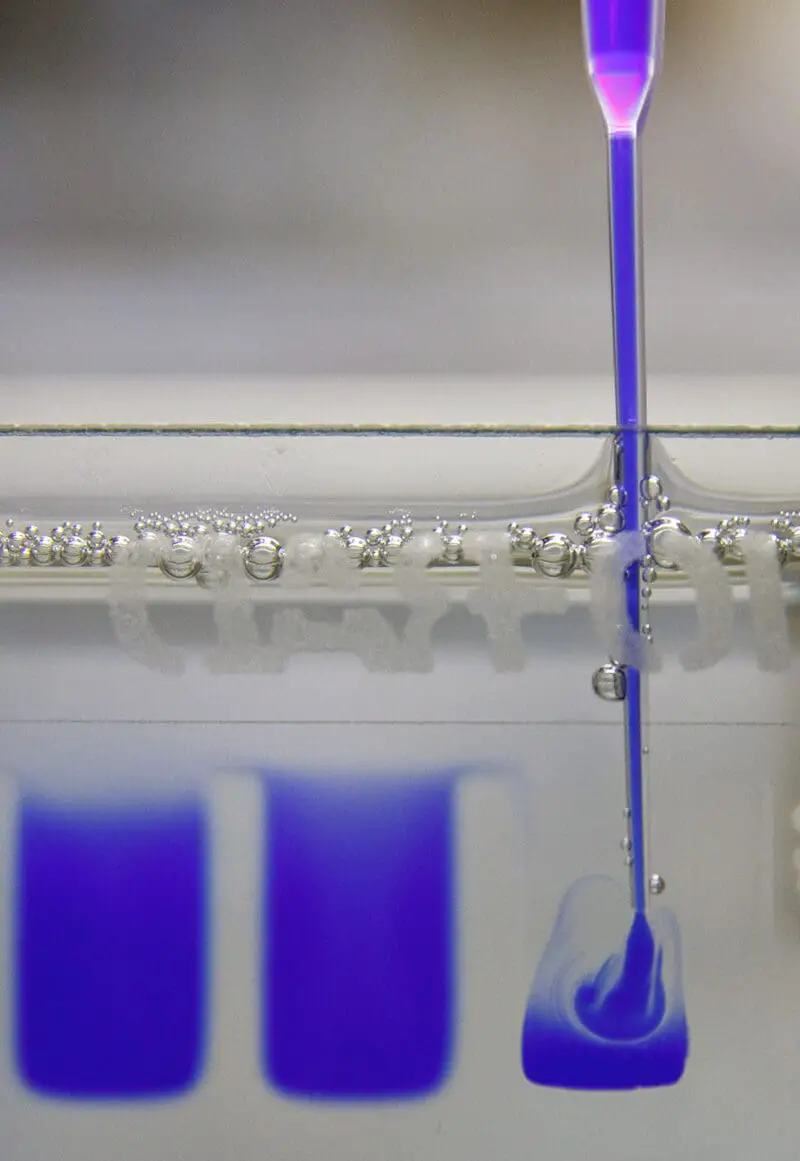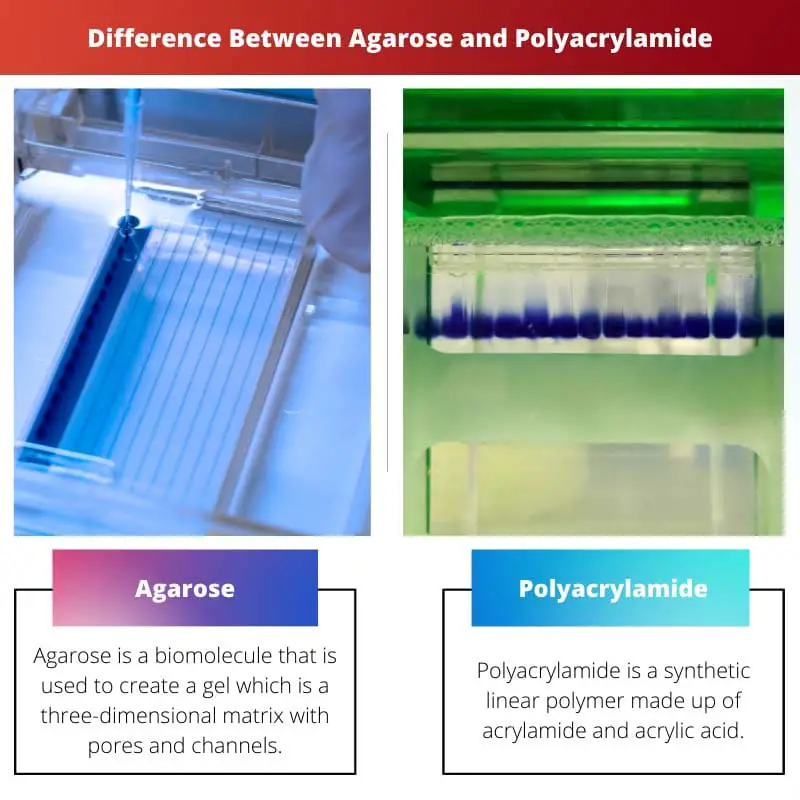Electrophoresis is one of the most used tools in molecular biology. It is used to separate nucleic acid. Electroporation is the process by which nucleic acid is separated based on size.
In electrophoresis, a gel is used. Wells are made in the gel in which nucleic acid samples are loaded.
Electric current is passed, and based on the size, the nucleic acid moves in the gel. It helps to quantify, separate, and purify the nucleic acid.
Key Takeaways
- Agarose gels separate larger DNA and RNA molecules, while polyacrylamide gels are more suited for smaller molecules and proteins.
- Agarose is a polysaccharide extracted from seaweed, whereas polyacrylamide is a synthetic polymer derived from acrylamide monomers.
- Agarose gels have lower resolving power but are less toxic and easier to handle. In contrast, polyacrylamide gels offer higher resolving power but can be more hazardous due to their neurotoxic nature.
Agarose vs Polyacrylamide
The difference between Agarose and polyacrylamide is that agarose separates large DNA fragments, but polyacrylamide gel separates shorter protein and nucleic acid fragments. Agarose is poured horizontally, whereas polyacrylamide is poured vertically. Agarose can be heated and poured horizontally but breaks easily, so it must be handled carefully.

Agarose gel is most commonly used to run electrophoresis. Since it helps to separate nucleic acid based on size, it is used to identify the unknown DNA or RNA sample.
Here, a ladder of known size is used, and the band of unknown nucleic is compared with the ladder, and the size is identified.
Polyacrylamide gel electrophoresis is called PAGE. It is commonly used to separate proteins based on their size.
This electrophoresis works based on the principle that the charged protein or nucleic acid sample migrates through the gel when an electric field is provided. Since the mobility of a biological molecule change depending on its size and charge.
The sample used must be treated to reach a uniform charge so that mobility depends on the size.
Comparison Table
| Parameters of Comparison | Agarose | Polyacrylamide |
|---|---|---|
| Toxicity | Not toxic | Slightly toxic |
| Pore size | Larger pores | Smaller pores |
| Uses | Agarose gel is mostly used to separate DNA and RNA | Polyacrylamide gel is used to separate protein and to quantify it |
| Gel pouring position | Horizontal position | Vertical position |
| Dye | Ethidium bromide | Bromophenol blue |
| Reusing | Agarose can be melted and reused | It is not normally reused |
What is Agarose?
Agarose is a biomolecule used to create a gel, a three-dimensional matrix with pores and channels. Hydrogen bonds hold together the three-dimensional matrix.
Since there are hydrogen bonds, heating can denature the matrix structure easily. The sample biomolecules move through the pores.
The melting temperature of agar is 85-95 degrees Celsius, and the gelling temperature is 35-42 degrees Celsius. Agarose gel is made by mixing agarose with water and melting it.
It is then poured horizontally on a mould in which a comb is placed. Agarose then cools down and forms a gel. The comb leaves a well in which the sample can be loaded.
Agarose gel of low concentration is prone to break. So, it must be handled with care. Agarose can be used to separate DNA and RNA. The pores in the agarose gel are much larger for a bacteriophage to enter.
Agarose is a polymer with pyruvate and sulfate groups. Since these groups are negatively charged, it causes the flow of water in the opposite direction to that of the movement of DNA.
The dye ethidium bromide is used to dye the DNA, which changes the size and charge of the sample. A buffer solution is poured into the setup, and current is passed, which causes the sample to move through the agarose gel and form bands.

What is Polyacrylamide?
Polyacrylamide is a synthetic linear polymer made up of acrylamide and acrylic acid. Polyacrylamide absorbs water actively and forms a soft gel. It is one of the gels used in electrophoresis.
Protein and nucleic acid can be quantified in polyacrylamide gel based on their electrophoretic mobility.
Polyacrylamide gel made by acrylamide hydration is good since the pore size can be regulated depending on the hydration. Gel with a small pore size is effective in examing smaller-sized molecules.
Larger molecules cannot get trapped through small pores, while smaller molecules easily move through pores and form bands.
Polyacrylamide gel is mostly famous for being used in the SDS PAGE experiment. SDS PAGE expands as Sodium dodecyl sulfate-polyacrylamide gel electrophoresis. It is used to separate protein samples based on their size.
Sodium dodecyl sulfate is a detergent that binds to the protein molecule. On binding to the protein, this detergent destroys the secondary and tertiary structure of the protein and makes it into a linear polypeptide chain.
This linear polypeptide is negatively charged and travels towards the anode when subjected to an electric field. Here the distance travelled by the molecule is inversely proportional to the log of the molecular weight.
It is also used to examine nucleic acid samples with low molecular weight.

Main Differences Between Agarose and Polyacrylamide
- Agarose is nontoxic and widely used, but polyacrylamide is considered mildly toxic, and it needs to be handled with caution
- Agarose is complex and made up of a mixture of many chemicals, whereas polyacrylamide is made up of only one type of molecule.
- Agarose gel has wider pores, while polyacrylamide has relatively smaller pores.
- Agarose is mostly used in the electrophoresis of nucleic acids, but polyacrylamide is used in SDS PAGE.
- Agarose gel is made by pouring the melted agar in a horizontal position, but polyacrylamide is poured in a vertical position.
- Unused agarose can be melted and repoured, but polyacrylamide cannot be reused.
- Ethidium bromide is the most commonly used dye for Agarose, but for polyacrylamide, bromophenol blue is mostly used.




